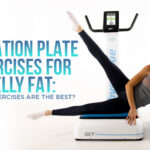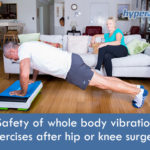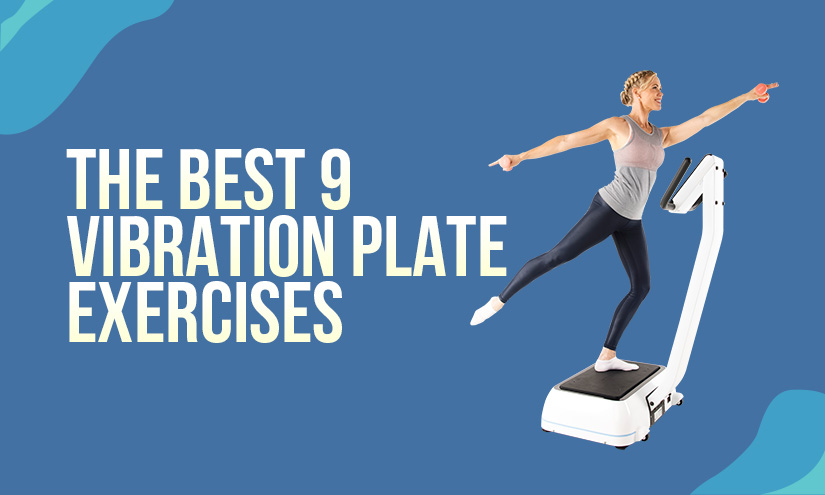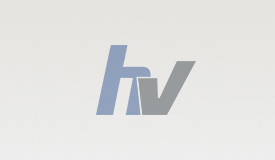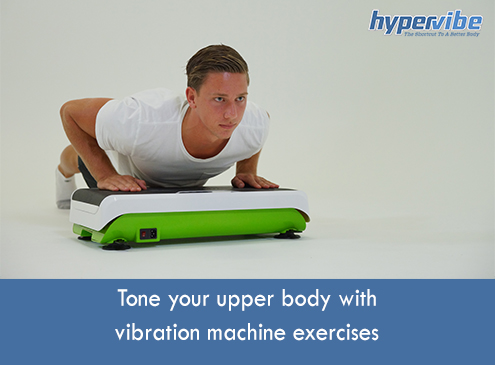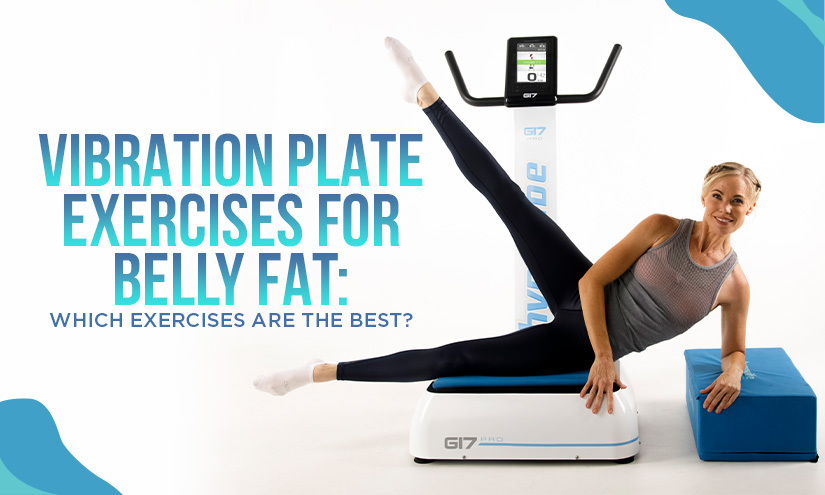Challenge Your Next Workout: Exercise Ball and Vibration Plate
They come in many colors and sizes and whether you call them Swiss balls, balance balls or exercise balls, one thing’s for sure: you can get an excellent full-body workout when you use them in conjunction with the right exercises. Perhaps it’s an oxymoron to call them stability balls because just like any balls they are far from stable.
However, when used correctly, they can indeed boost your stability, which in turn, will boost your muscle activation, improve your back and spine health, and strengthen your core, posture and muscle balance.
It’s called doing a workout with an exercise ball. But you don’t have to only use the ball in your exercise routine. Instead, you can use it in conjunction with a whole-body vibration plate for maximum results. This article takes a look at why exercising with an exercise ball makes for a good workout and how to enhance it using a vibration plate. Let’s explore!
Is an exercise ball a good workout?
The short answer to the question of whether an exercise ball is a good workout is “yes”. Below we offer some reasons why it can help your spine health, overall core strength and more. Take a look:
- Great for back and spine health: one of the first effects of a workout with an exercise ball is the positive effect it can have on your back and spine health. The muscles that support your spinal structure are activated and reinforced, helping you strengthen your spine and lower back. The balance required to use the exercise ball correctly means improved strength, posture and better blood flow.
- Great for core strength: because the very nature of an exercise ball is instability, you need to engage your core muscles to remain stable on it. This means exerting more effort that keeps your body balanced while performing exercises. It’s also a great way of targeting muscle groups that generally remain ignored when you work out on a flat surface.
- Great for flexibility and balance: when used accurately, doing exercises with an exercise ball can help improve your flexibility because it offers that extra stretch. You’re essentially driving your body to adapt to the shape of the ball, whilst adjusting the position of your joints and expanding various muscle groups to gain and improve your balance.
- Great for using your own body weight as resistance: whatever type of workout with an exercise ball you choose to do, and if you aren’t using extra gym equipment like dumbbells, you are essentially using your own body weight as resistance to help you tone up your muscles and lose weight.
- Great for a good cardio burn: this is especially the case if you use an exercise ball in a cardio workout. It’s a great way to boost your heart rate that will increase blood circulation and increase the intensity of your workout.
- Great for enhancing sports performance: apart from providing better protection against injury, you can also enhance your sports performance due to all of the above factors combined. These include core strength and muscles, improved balance, flexibility, coordination, and posture.
What kind of exercises can you do with an exercise ball?
Although there are numerous workouts with an exercise ball that you can do, exercising in conjunction with a whole-body vibration plate and an exercise ball is the perfect combination to get your heart rate up, make your muscles stronger while getting the benefits of whole-body vibration that activate and stimulate your muscles at a much higher frequency than regular exercise offers. So, without further ado, some of the best Swiss ball exercises you can perform with a vibration plate include the following:
-
- Incline and decline push-ups
Instead of placing your hands and toes on the ground for a push-up, you’ll want to place the ball in front of you and then place your upper body on it while keeping your toes on the vibration plate. This will require balance. Next, place your hands immediately underneath your shoulders while your arms are straight. To begin the exercise, you will want to slowly bend your elbows to a 45-degree angle while keeping your body as stable as possible. Then, you need to push your elbows back up to a position where your arms are straight on the ball. This exercise engages your core, glutes, quads, triceps and more.
As for decline push-ups, this particular workout with an exercise ball is exactly the opposite of an incline push-up. This time, you place your feet on the ball while your arms are flat on the vibration plate. Once again, you’ll want to place your hands directly underneath your shoulders and then bend your elbows to a 45-degree angle and then straighten them out whilst repeating this push-up variation. Your shins should be on the ball as you assume the plank position. Muscles that are engaged during this exercise include the core, quads, and glutes.
-
- Wall squats and overhead squats
For wall squats, stand on the vibration plate, which is positioned next to a wall. Your back should be towards the wall with the exercise ball between the small of your back and the wall. As you gently push your body weight on the ball to keep it in place, you will also slide up and down the wall as you perform squats by bending your knees and rolling the ball with your range of motion as you do so.
As for overhead squats, this exercise requires you to stand on a vibration plate with feet hip-width apart. As you lower your body by bending your knees, you will raise the exercise ball above your head with both hands which are straightened out and next to your ears. As you come back into the normal position, you will bring your arms and the ball you’re holding in front of your body.
-
- Incline and decline planks
For incline planks, you will want to position your forearms on top of the ball while clasping your hands together. Meanwhile, your legs should be straight out behind you with your toes on the vibration plate. You will need to lift your hips up enough to enable your body to form a straight line as you hold the position for up to one minute.
Decline planks are the opposite. Your hands are placed on the vibration plate while your feet are positioned on the exercise ball. Lift your body off the ground and hold the straight line position for around one minute (or for as long as you are comfortable).
-
- Other exercises you can do with your workout with an exercise ball
Apart from these extremely beneficial exercises mentioned above, your workout with an exercise ball would not be complete without some of the following:
- V sit-ups
- V-passes
- Pikes
- Jackknife
- Hamstring curls
- Hamstring floor taps
- Deadbugs
- Russian twists
- Single-leg hip thrusts
- Single-leg glute raises
- Shoulder raises
- Rollouts (including abs and arms)
- Bicycles
- Stir the pot
- Mountain climbers
- Sprinters
- Glute bridges
- Crunches
- And much more
Your next challenge awaits!
If you want your next workout with an exercise ball to challenge you and give you more for the time you’re putting into it, then exercising with a Swiss ball and a whole-body vibration plate in tandem with each other will do just that. The high-frequency of a vibration plate and the ability of an exercise ball to stabilise you and improve your balance and flexibility are just some of the benefits. In addition to this, you’ll be much better able to burn calories and shed pounds as you combine these two exercise equipment types for the most effective workout.
Resources:
https://www.northcentralsurgical.com/blog/the-benefits-of-exercising-with-a-stability-ball-54.html#:~:text=In%20addition%20to%20exercise%2C%20stability,balance%20and%20stability%20will%20improve.
https://www.womenshealthmag.com/fitness/a20702401/stability-ball-exercises/

